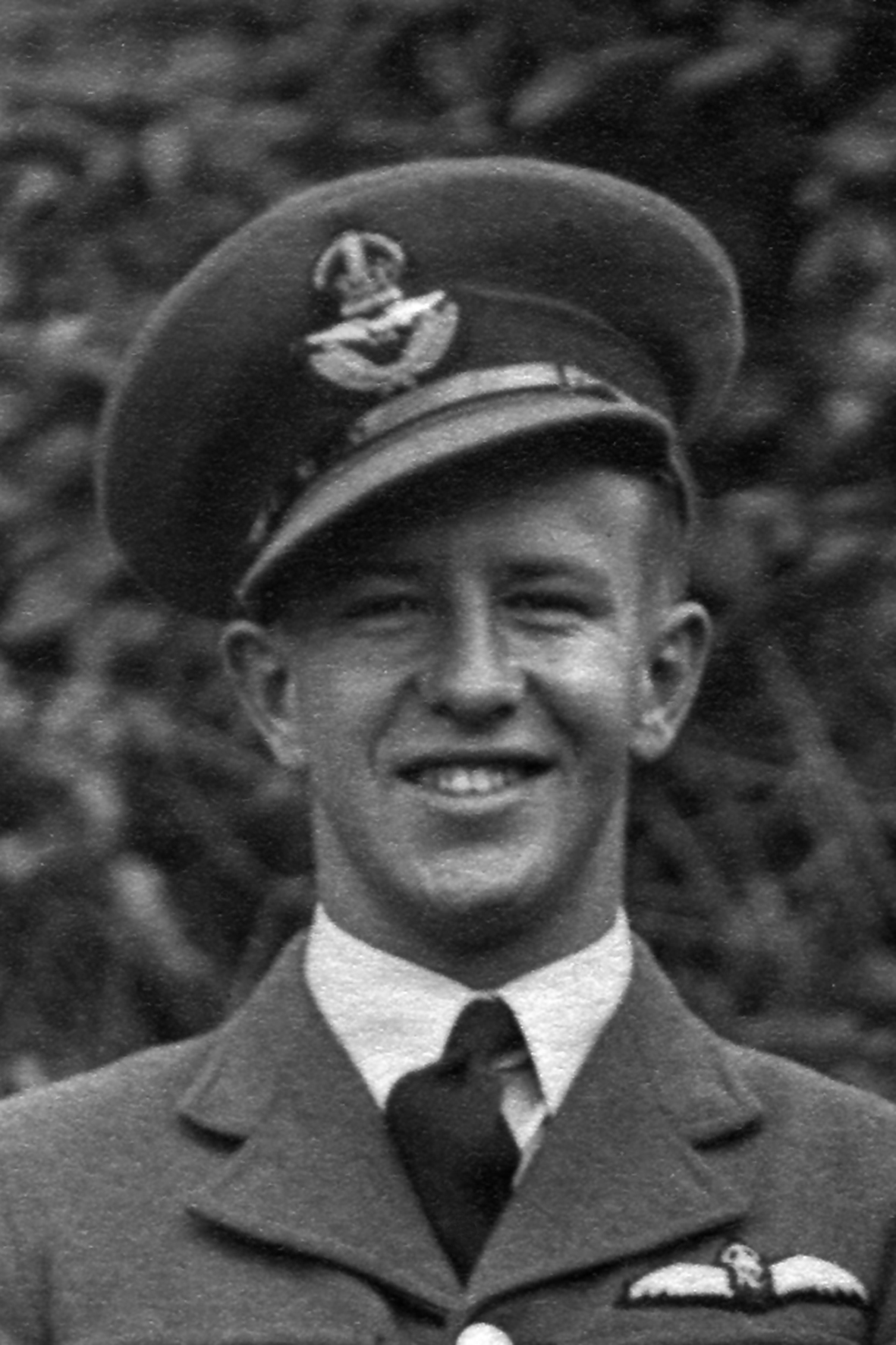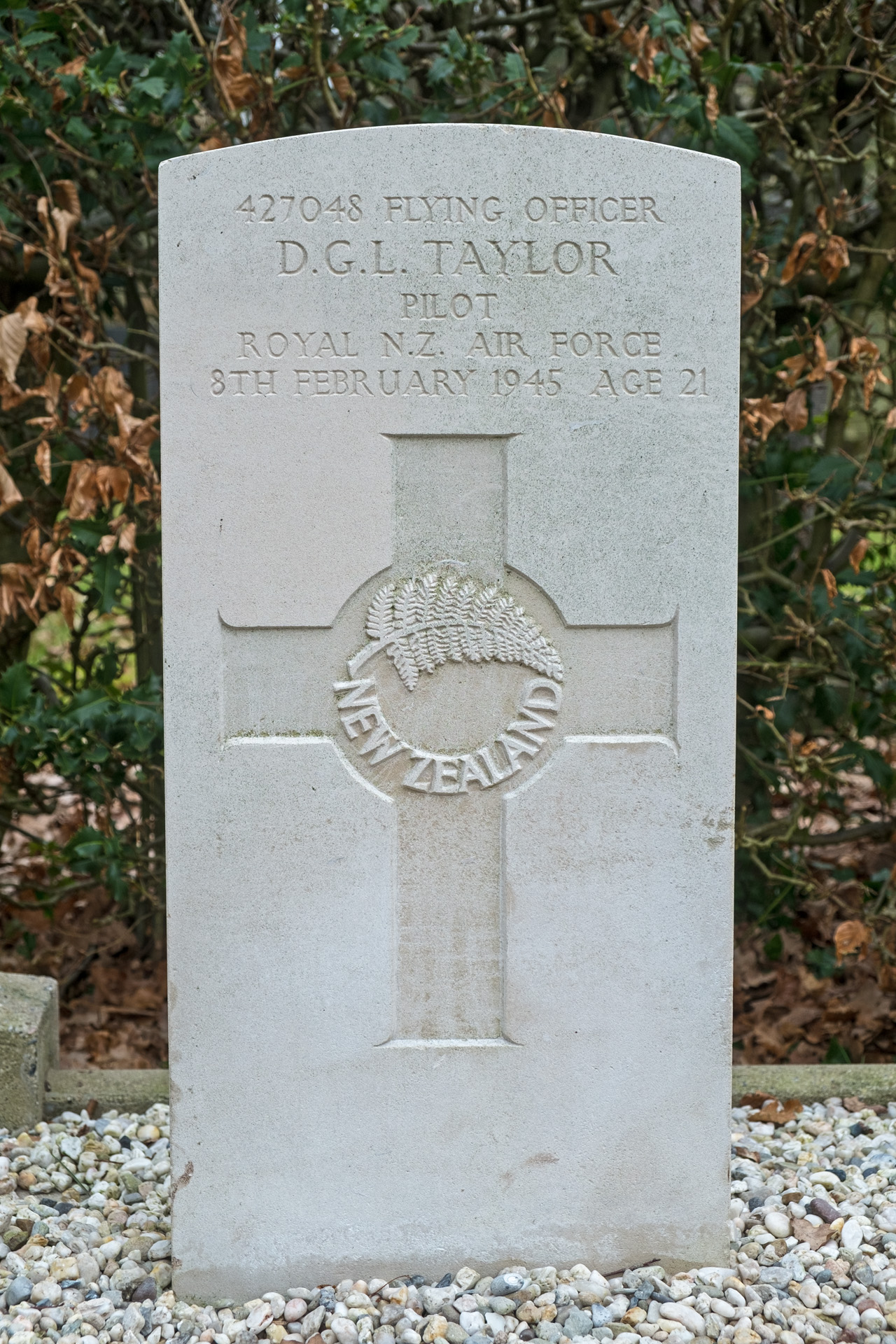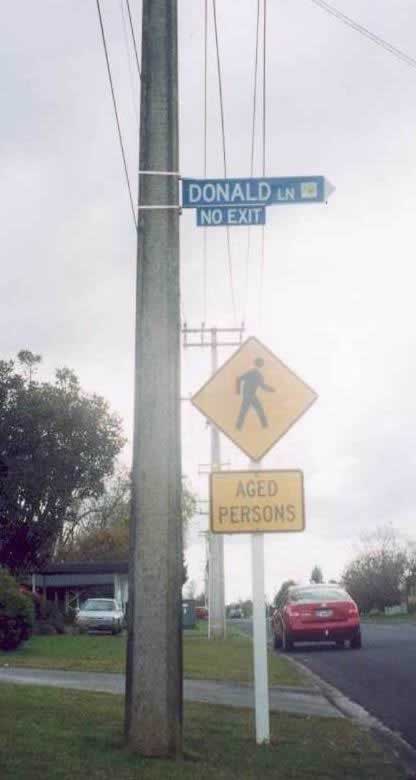
_______________________
Donald Graeme Lane TAYLOR
Known to all as "Don"
Serial Number: NZ427048
RNZAF Trade: Pilot
Date of Enlistment: 11th of July 1942
Rank Achieved: Flying Officer
Flying Hours: 654 hours
Operational Sorties: “Nearly” 120 opsDate of Birth: Born on the 31st of January 1924 in Cambridge
Personal Details: Don was the only son of Mrs Eos Enid Taylor and the late George Graeme Lane Taylor of Vogel Street, Cambridge. He was educated at Cambridge Primary and Cambridge District High School. He also attended Hamilton High School, where he achieved his University Entrance (Medical Prelim).He was keen on rugby, tennis, swimming and shooting. Don was a very popular and well known young man in Cambridge and even today most local people of his generation remember him with great affection.
He joined the staff of the Bank of New Zealand, Cambridge branch, on the 1st of February 1940.
At his official farewell from Cambridge at the Patriotic Committee Dance in March 1943, Don made a speech on behalf of the 26 men leaving the district for active service.
Donald Lane, a cul-de-sac off Vogel Street in Cambridge is named in memory of Donald Taylor.
Service Details: Prior to serving in the RNZAF, Don had spent a short time in the New Zealand Territorials. He applied to join the RNZAF as a pilot in January 1942, at the age of 18. He enlisted at RNZAF Station Taieri, Dunedin, on the 11th of July 1942, to undergo his initial training.
On the 31st of July 1942, Don began his flying training in Tiger Moths at No. 1 Elementary Flying Training School, also at Taieri. In October 1942 he proceeded to commence advanced training on Harvards at No. 2 Service Flying Training School, RNZAF Woodbourne.
He completed this flying training course on the 29th of December 1942, receiving his Wings on this date. However he remained with the school for more advanced training, and on the completion of this on the 6th of March 1943, Don was commissioned and promoted to the rank of Pilot Officer.
In early April 1943 Don embarked on a troopship destined for England. He arrived on the 11th of May 1943, and after a period at a reception centre, he proceeded the following month to No. 7 Advanced Flying Unit at Peterborough, Northamptonshire. This course saw him flying Miles Master advanced trainers until the beginning of August 1943.
At that point Don proceeded to No. 53 Operational Training Unit at Kirton-on-Lindsey, Lincolnshire, to convert onto single seat fighters - namely the Supermarine Spitfire.
In November 1943, with all his training completed, Don was posted to No. 485 (NZ) Squadron, the New Zealand Spitfire Squadron, at Drem in East Lothian, Scotland.
Don was engaged in combat exercises at Drem till January 1944. He carried out his first operational flight, a defensive patrol, on the 2nd of February 1944. He continued to make operational sorties through the month, and on the 28th of February 1944, the squadron was moved south to Hornchurch in Essex.
During March Don was attached to No. 12 Armament Practice Camp at Llanbedr in Wales for a short course, before returning to the squadron at Hornchurch. In April 1944 the squadron and Don moved again, this time to Selsey in Sussex. From this base, Don became engaged in a number of operational missions over enemy territory, carrying out such duties as escorting bombers on raids, and dive-bombing targets in France.
In early May 1944, Don spent another short period attached to No. 17 Armament Practice Camp in Southend, Essex - returning again to No. 485 Squadron on completing the camp.
In June 1944 Don was very active with his fellow squadron members over the D-Day Normandy beachhead. The squadron moved at the end of June to spend short periods at Coolham and Tangmere, and then on the 31st of August 1944, they moved to Basinville Airfield, near Caen in France. In September they moved again to Par de Calais, operating from a much more modern airfield.
On the 30th of September 1944, Don had taken part in the dive-bombing of the German garrison in Calais, following a 24-hour armistice, during which French civilians were allowed to leave the city.
In early November 1944, as the front line shifted eastwards, Don and the squadron shifted again, to Maldegem in Belgium. On the 6th of November Don returned to Britain for a fortnight, at which time he was stationed at Fairwood Common, in Glamorganshire, Wales. After this short break he returned to the squadron at Maldegem.
On the 6th of December 1944 Don made his first operational flight over Germany itself.
Don's final move was to the airfield at Gilze-Rijen in Holland. As well as those airfields mentioned where No. 485 Sqn was based in Europe, they had also spent very short periods at a number of other airfields in France and the Low Countries, and Don had also visited a number of airfields simply to refuel his aircraft.
Don had carried out nearly 120 operational flights by the time he was killed. These had ranged from defensive patrols to offensive sorties, as well as close support work with Allied soldiers on the ground. He had destroyed an impressive amount of enemy trains and transports.
Details of Death: The circumstances previously recorded here and in some publications surrounding Don's death have come under scrutiny, and Dirk Munk has uncovered more accurate details of Don's sad demise. This page has been updated accordingly in November 2017.
On the 8th of February 1945, Don took off at 09.25hrs from their captured base B77 [Gilze-Rijen], in the Netherlands with eleven others to make an Armed Reconnaissance over the Groningen-Zwolle area of the Netherlands.
He was flying Supermarine Spitfire LFIXE MK529 – OU-D ‘Waipawa Special II'. At Onnen, 6km southeast of Groningen, the Squadron strafed a small marshalling yard which had a locomotive repair workshop adjacent. A departing train was attacked, and the Spitfires pulled up, turned and came in for another pass at 1010hrs.
Don took MK529 so low its wing struck a vertical object. Some reports reckoned he hit a lamp post on the yard perimeter, however researcher Dirk Munk recently discovered that the aircraft in fact struck a water tower structure, according to the town clerk of Haren at the time. Damage caused the aircraft to hit the ground, bounce, smash through a row of trees and hit a house at the address Tuindorp 125 and 126. Don was killed in the crash along with three German railway workers inside the house. Don was 21 years old
Above: An aerial photo of the marshalling yards where Don lost his life, and a
crop of the area of the crash where you can clearly see the water tower that
Don's wing struck, causing his crash. The photo was taken by KLM Aerocarto, and has been kindly sourced by Dirk Munk for this page from Aviodrome in the Netherlands.Thanks to Dirk Munk.
Buried at: Don was buried at Haren General Cemetery, Plot 1. Row G. Grave 6.
Connection with Cambridge: Don Taylor was a member of a well known Cambridge family and had joined up from Cambridge
Above: Don Taylor's grave at at Haren General Cemetery in the Netherlands. The photo of this updated headstone with Don's correct date of death was kindly supplied by Mr Dirk Munk.
Above: The signpost pointing to the little cul-de-sac named after Don Taylor, Donald Lane.
Below: A view of the little lane itself looking from the signpost's position.
Note: Details of this airman's death were sourced from Netherlands researcher Dirk Munk
________________________________________________________________
| Home | Airmen | Roll of Honour |
|---|







